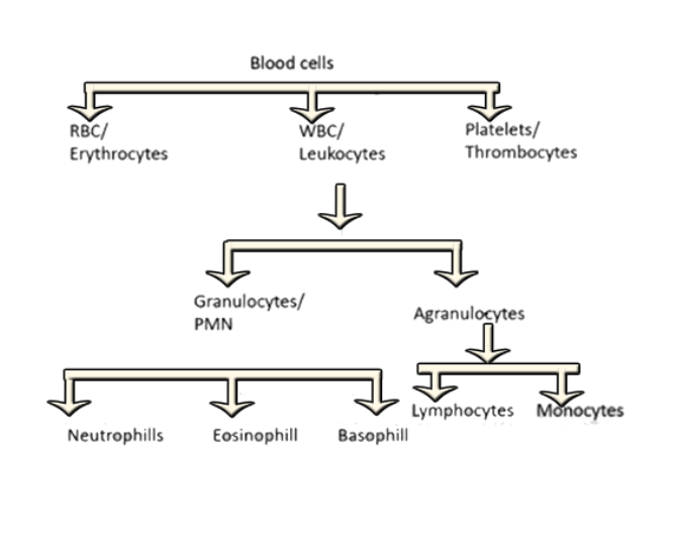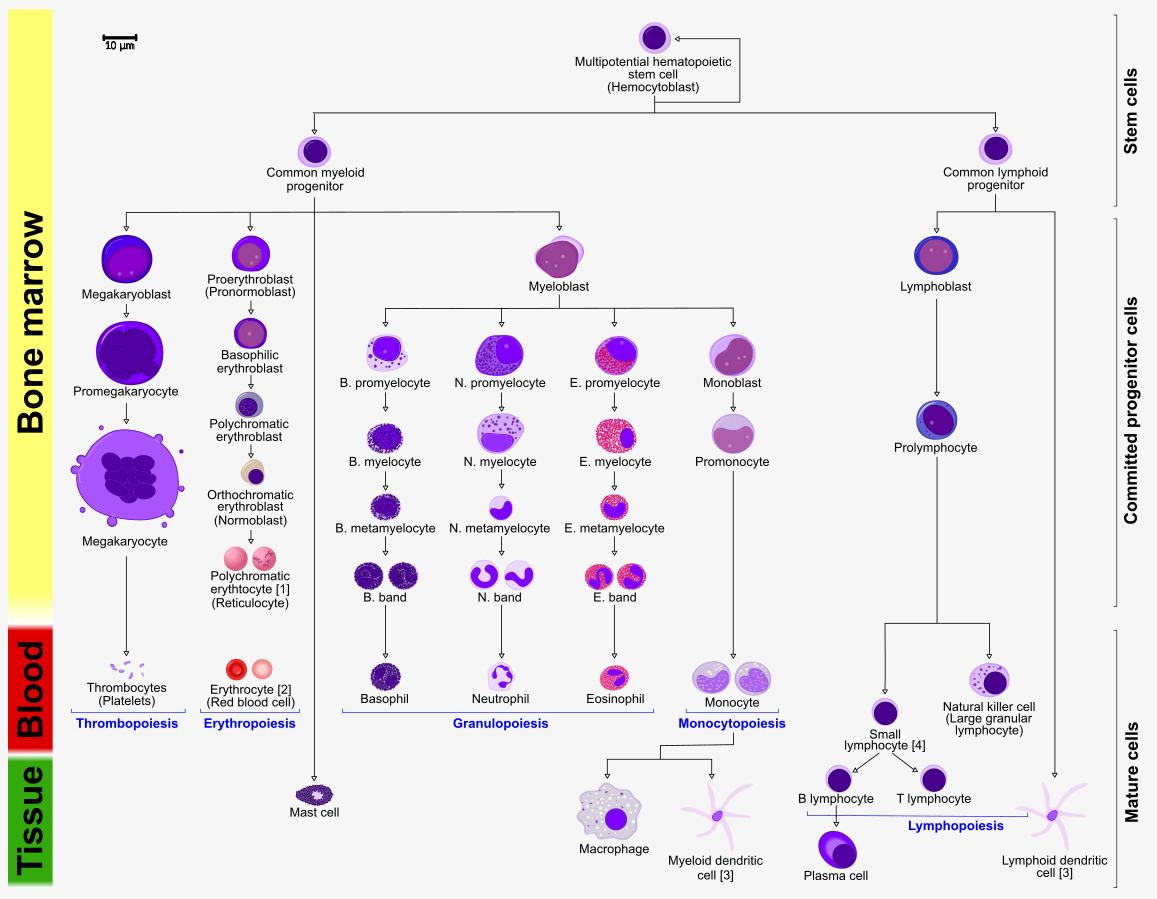In adaptive and innate immunity, we have discussed the different types of cells such as lymphocytes, neutrophils, basophils. The process of the formation of these cells is known as hematopoiesis. Hemato = blood, poiesis =synthesis
Hematopoiesis is the process to produce all the cellular components of blood. Hematopoiesis occurs during embryonic development and during adulthood to replenish the blood system.
Before moving to the formation of blood cells lets have a look at the component of blood cells.
Component of blood:
Blood is made up of different types of cells.
-
1. Red blood cells:
Also called Erythrocytes and the main functions for the RBC is to transport the oxygen and hemoglobin in our body.
-
2. White blood cells:
Also called Leukocytes these are also known as the guard of the body (cells of the immune system). WBC’s are further classified into various categories such as Granulocytes and Agranulocytes (based on the presence of granules). Granulocytes are further classified into Neutrophils, Basophil, And Eosinophil. Agranulocytes are classified into Lymphocytes and Monocytes.
-
3. Platelets (Thrombocytes):
These cells help in the clotting of blood.

How the blood cells are formed?
Blood cells are formed from the hematopoietic stem cells. Hematopoietic stem cells exist in the medulla of bone marrow. Stem cells are the cell that has a capability of asymmetric division and self-renewal. A stem cell is a cell that can replicate itself and differentiate into many other cell types. Stem cells are of two types:
- 1. Embryonic stem cell (can form any type of cell in our body)
- 2. Adult stem cell (stem cell that can form a cell of a particular tissue)
Hematopoietic stem cells are the type of adult stem cell that can only form blood cells.

Multipotential hematopoietic stem cell (hemocytoblast) can form either a common myeloid progenitor or common lymphoid progenitor, it depends upon the need of the immune system.
If the hemocytoblast gets converted to Myeloid progenitor than it will help in the formation of the cells for generating innate immune responses. Such as basophil, neutrophil, and platelets.
The process of the formation of :
- Thrombocytes are known as Thrombopoiesis
- Erythrocytes are known as Erythropoiesis
- Granulocytes are known as Granulopoiesis
- Monocytes are known as Monocytopoiesis
And if the hemocytoblast gets converted into a common lymphoid progenitor then it will help in the formation of Natural killer cells, B lymphocytes, T lymphocyte and this process is known as Lymphopoiesis.
References:
- 1. Kindt, T. J., Goldsby, R. A., Osborne, B. A., & Kuby, J. (2007). Kuby immunology. Macmillan.
- 2. Brock Biology of Microorganisms, 13th Edition by Madigan, Martinko, Bender, Buckley, Stahl.

This is a wonderful news regarding bloggers. It opens admission to a huge spectrum of individuals who are finding an establishment to express their inquiries. With your theme, I could gain the visibility We are having at this moment. Thanks just for this informative publish, I learned a whole lot!
Thanks for giving this particular good written content on your website. I came across it on the internet. I may check to come back when you post extra aricles.
Resources such as the one you mentioned here will be extremely helpful to myself! I will publish a hyperlink to this page on my personal blog. I am certain my site visitors will uncover that fairly valuable. Have you considered promoting your blog? add it to SEO Directory right now 🙂 http://www.links.m106.com
I want all note HAP 2